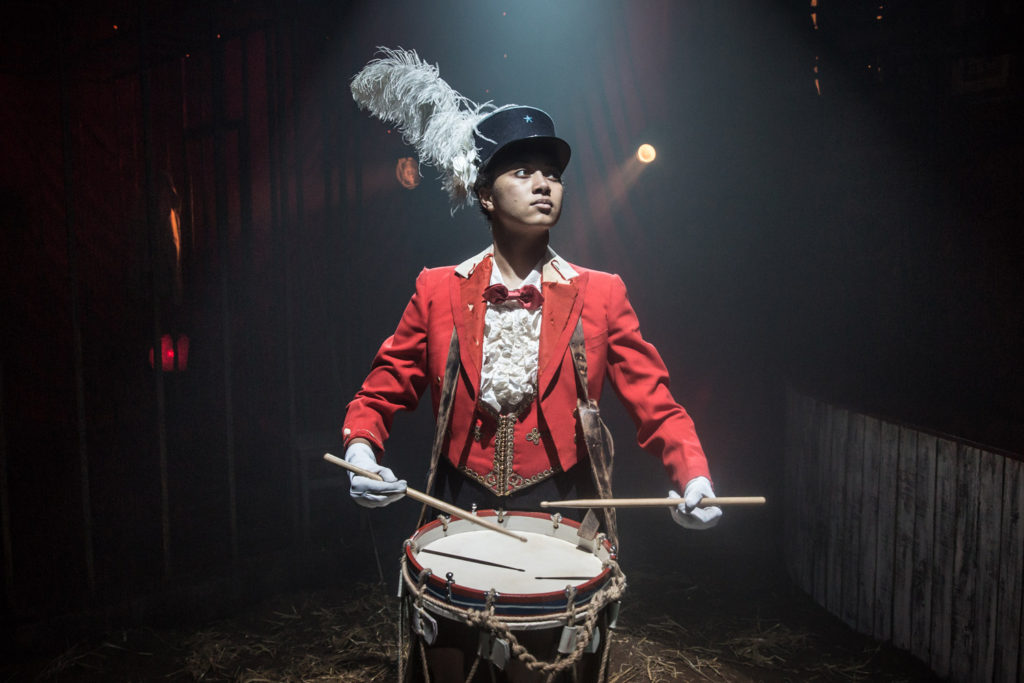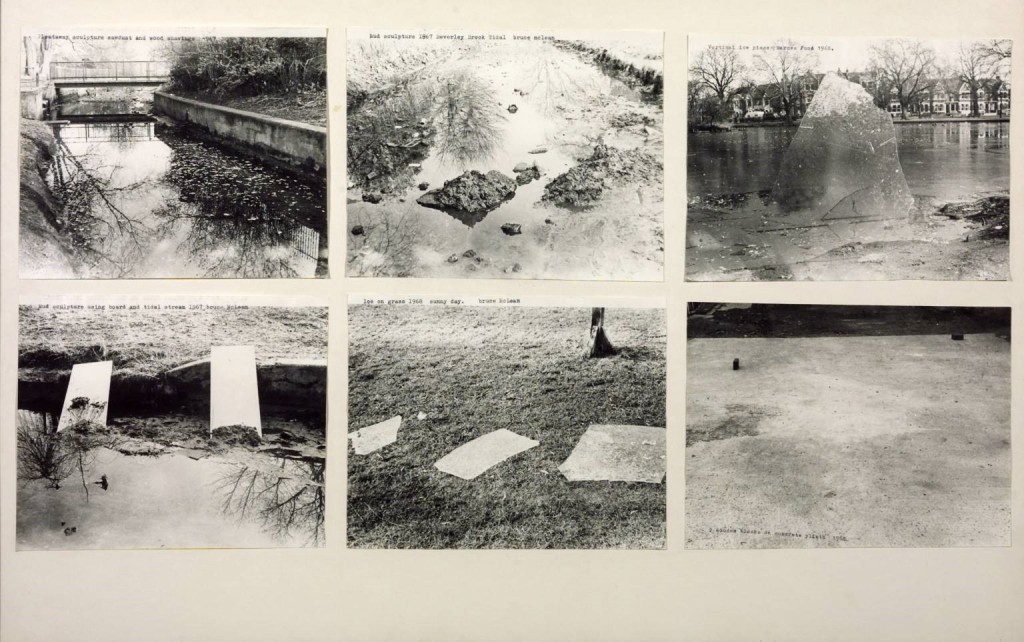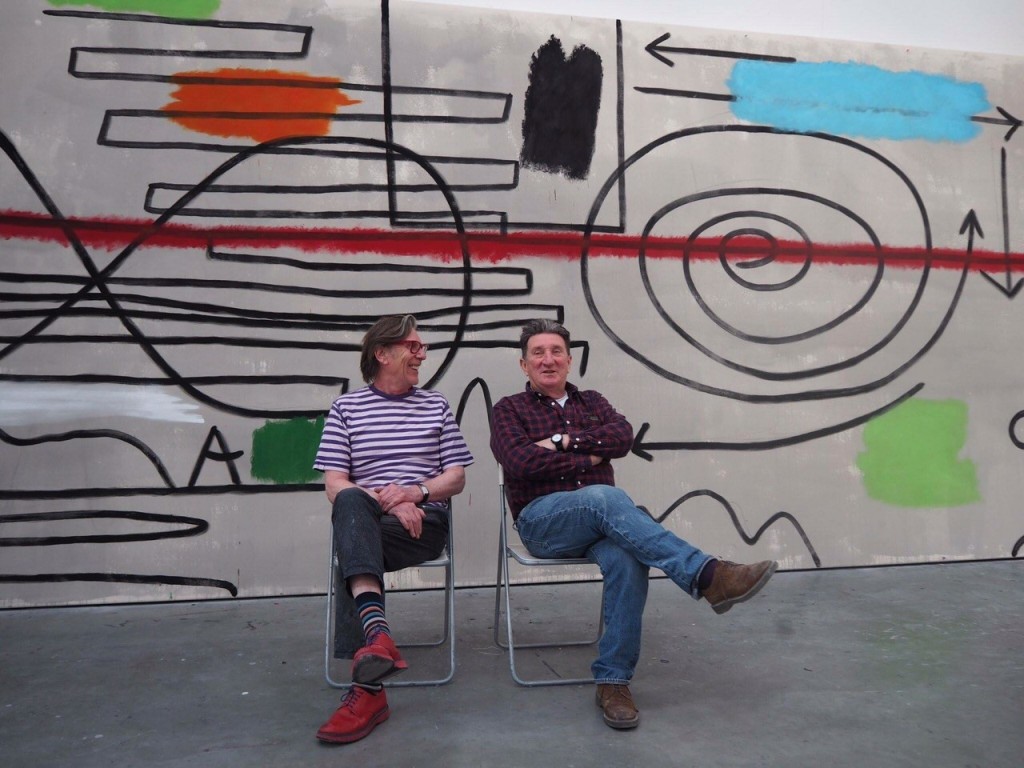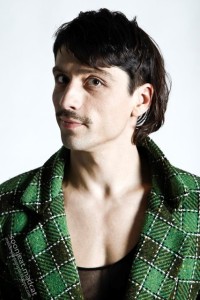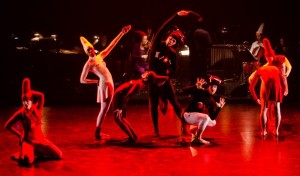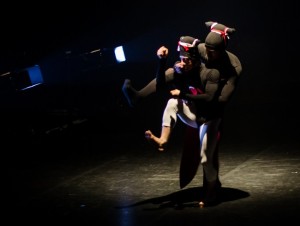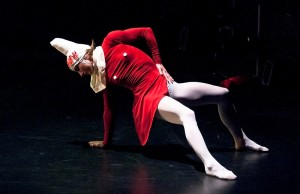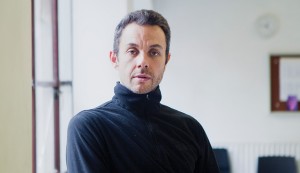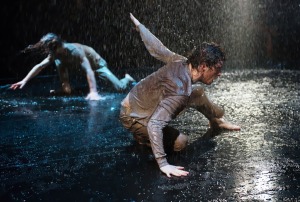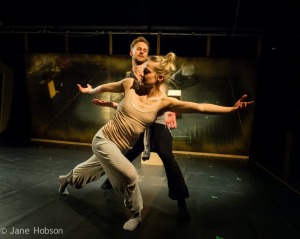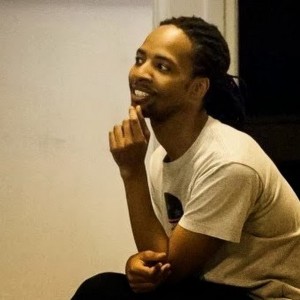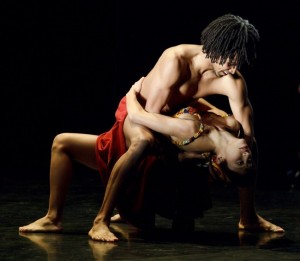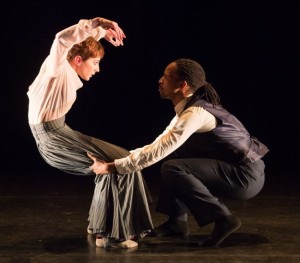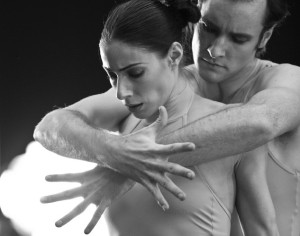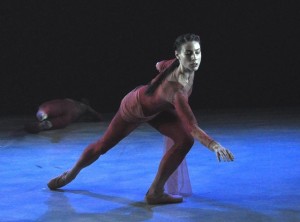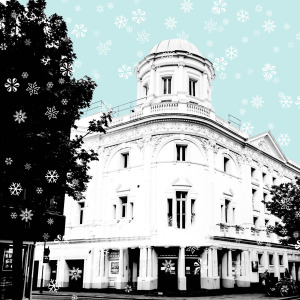The Print Room | Autumn Season 2016
Artistic Director Anda Winters today announces Print Room at the Coronet’s forthcoming season running through until December 2016. The season opens with Tennessee Williams‘ A Lovely Sunday for Creve Coeur, directed by Michael Oakley. The production opens in the main theatre space on 15 September, with previews from 12 September, and runs until 7 October.
October brings William Kentridge and composer Philip Miller‘s Paper Music – a subversive song-and-film cycle which explores the relationship between sound and music. This production marks the return of Kentridge to the Coronet following last year’s presentation of Ubu and the Truth Commission by Handspring Puppet Company. It will coincide with the first major UK exhibition of Kentridge in over 15 years, at the Whitechapel Gallery, curated by Gallery Director Iwona Blazwick.
This is followed by Riotous Company‘s production – SCHERZO for Piano and Stick and Jocelyn Pook‘s song cycle Hearing Voices, which premièred in December 2012 at the Queen Elizabeth Hall.
The literary series Poetry at the Print Room continues in the studio, welcoming back Helen Mort, and introducing award winning poets: Mona Arshi and Luke Kennard.
Completing the programme is Print Room at the Coronet’s first-ever Shakespeare production, The Tempest. Simon Usher, former Artistic Director of Theatre Belgrade, Coventry, directs.
Artistic Director Anda Winters said today, “I’m thrilled to announce our 2016 Autumn Season, which opens this September, marking our second anniversary of presenting theatre in Notting Hill’s iconic Coronet. We continue our mission to stage rarely performed plays by major playwrights and so we open the season with Tennessee Williams’ A Lovely Sunday for Creve Coeur, directed by Michael Oakley. It’s a wonderful example of Williams’ writing: precisely observed, painfully funny and full of presence and pity. Paper Music sees us welcome back William Kentridge, one of the world’s foremost visual artists, for a poignant and subversive exploration of the relationship between image and sound. And we mark in our own special way the 400th anniversary of Shakespeare’s death with a production of The Tempest. Director Simon Usher describes it as “the world in two hours”. In this commemorative year we feel the time is right to make our Shakespeare debut. And it seems particularly fitting to remember him by his valedictory investigation of humankind. This new season, including a rarely seen Twentieth Century classic, a live cine-concert and our first-ever Shakespeare, demonstrates our truly eclectic artistic policy. Our major aim, as always, is to give audiences important and beautiful work’.
A Lovely Sunday for Creve Coeur
by Tennessee Williams
12 September – 7 October
Press night: 15 September 7:30pm
Main Theatre
Director: Michael Oakley; Designer: Fotini Dimou; Lighting Designer: David Plater; Sound Designer: Max Pappenheim
It’s Sunday morning in early June, 1930s St Louis. In a sweltering apartment, as Dorothea completes her rigorous daily exercise regime, Bodey is in the kitchen, frying chicken for a picnic at Creve Couer Lake. Upstairs neighbour Mrs Gluck has depression so bad she can’t even make coffee, and now Dorothea’s spinster colleague Helena arrives with the news that she’s found a lovely new apartment for them to share. But Dorothea’s mind is elsewhere, she is hoping for a call from the man of her dreams…
Print Room at the Coronet continues its important mission to stage unknown and rarely performed works by major writers. A Lovely Sunday for Creve Coeur is rarely performed in the UK, and yet it’s classic Tennessee Williams. Savagely funny, at times almost farcical, beneath the surface lies a depiction of the fragility of hope and a tender exploration of loneliness and the need for human connection.
Tennessee Williams (1911 – 1983). Arguably one of the greatest American playwrights of the last century, he received a Rockefeller fellowship in 1940 for his play Battle of Angels, and he won the Pulitzer Prize in 1948 for A Streetcar Named Desire and in 1955 for Cat on a Hot Tin Roof. Other plays include Summer and Smoke, The Rose Tattoo, Camino Real, Baby Doll, The Glass Menagerie, Orpheus Descending, Suddenly Last Summer, The Night of the Iguana, Sweet Bird of Youth, and The Two-Character Play.
Michael Oakley directs. His most recent theatre credits include The Invisible (Bush Theatre) and The Life and Times of Fanny Hill (Bristol Old Vic). In 2012 he was Co-Artistic Director of Theatre on the Fly – a pop-up venue at Chichester Festival Theatre – where he directed a production of April De Angelis’ Playhouse Creatures. Prior to this, he was Trainee Director in Residence at Chichester and a recipient of the JMK Award for young directors. In addition to working alongside Trevor Nunn, he has been associate director to Jonathan Kent, Richard Eyre, Adrian Noble and Jonathan Church.
Fotini Dimou returns to the Print Room where she previously designed sets and costumes at the for Lot and his God by Howard Barker. Fotini trained as set and costume designer at the Central School of Art and Design and has been working extensively as a designer in theatres such as the RSC, National Theatre, Royal Court, Chichester Festival Theatre, as well as the West End and National tours. She has also designed Operas for the ENO, the Royal Opera House, Wexford Opera, Scottish Opera touring company and Opera North. Her work extends to Europe as well as the US where she has designed for Opera and Dance companies such as La Scala in Milan, Baden Baden Festspielhaus, Geneva Opera, and the Metropolitan Opera in NY. This year she designed the costumes for Manon Lescaut at the NY Met and An Italian in Madrid for Richard Alston Dance Company at Sadlers Wells. She also designs for TV dramas and feature films. She won this year’s BAFTA costume design TV award for her work on The Dresser a BBC TV film starring Ian McKellen and Anthony Hopkins.
Paper Music
by William Kentridge and Philip Miller
9, 10, 12, 13, 14 October
Main Theatre
Following 2015’s presentation of Ubu and the Truth Commission, the Print Room is greatly privileged to be welcoming back to the Coronet one of the world’s most important visual artists, William Kentridge.
Paper Music is a witty, poignant, gently subversive cine-concert, in which film (mostly animations) based on Kentridge’s charcoal and ink drawings combined with live musical performances makes for a fascinating exploration of the relationships between sound and image. On stage, vocalists Ann Masina and Joanna Dudley will be joined by pianist Vincenzo Pasquariello.
This song-and-film cycle is one of the latest projects in the long-time, ongoing collaboration between Johannesburg-born Kentridge and South African composer Philip Miller. Their artistic partnership dates back to Kentridge’s 1993 film Felix in Exile, part of his celebrated Soho Eckstein series for which Miller wrote the score.
To coincide with Paper Music the Whitechapel Gallery presents Thick Time, the first major UK exhibition of work by William Kentridge (b.1955) in over 15 years from 21 September 2016 – 15 January 2017. The exhibition, curated by Iwona Blazwick, Whitechapel Gallery Director, will feature six dramatic works created between 2003 and 2016, including two of the artist’s extraordinary immersive audio-visual installations, The Refusal of Time (2012) and O Sentimental Machine (2015).
William Kentridge is one of South Africa’s pre-eminent artists, globally acclaimed for his drawings, films and opera and theatre productions. His work draws on varied sources, including philosophy, literature and early cinema to create intricate art works and spellbinding environments in which he explores theories of time and relativity, the history of colonialism and the aspirations and failures of revolutionary politics. In Johannesburg he co-founded the Junction Avenue Theatre Company and worked in various areas of television, film and theatre and collaborated on projects with the Handspring Puppet Company. In 2010 Kentridge received the Kyoto Prize in recognition of his contributions in the field of arts and philosophy. In 2011 he was elected an Honorary Member of the American Academy of Arts and Letters and awarded the degree of Doctor of Literature honoris causa by the University of London. In 2012 he delivered the prestigious Norton Lectures at Harvard University. Recently his work has been seen at Tate Modern in London, Jeu de Paume and Louvre in Paris, La Scala in Milan, Albertina in Vienna, Metropolitan Opera and Museum of Modern Art in New York, and the Pinacoteca do Estado de São Paulo.
Philip Miller has worked with some of the most innovative filmmakers and visual artists to emerge from South Africa. He has composed music for the soundtracks to many local and international film and television productions. Recent film and television scores include The Bang Bang Club (nominated for a Genie Award, Canada), Black Butterflies (awarded best film score at the South African Film and Television Awards), The Girl, Martha and Mary and BBC’s The Borrowers. Miller has also collaborated extensively with internationally acclaimed artist, William Kentridge which includes the 5-screen multimedia installation, The Refusal of Time (Tate Modern, London) and 9 Drawings for Projection. Miller’s choral work, Rewind: A cantata for voice, tape and testimony, based upon testimonies from the Truth and Reconciliation Commission had its US premiere in New York at the Celebrate Brooklyn Music Festival. In South Africa it has been performed at the Market Theatre, Johannesburg; Baxter Theatre in Cape Town and the Royal Festival Hall in London. Miller has also produced a number of albums including arrangements of traditional South African lullabies, The Thula Project and the soundtrack to both Black Box/ Chambre Noir. Other works include Shona Malanga and White Lion.
Devised by Riotous Company in association with Nordisk Teaterlaboratorium
SCHERZO for Piano and Stick
17 – 20 October
Main Theatre
Director: Tage Larsen; Stick: Mia Theil Have; Piano: Nikola Kodjabashia; Costumes: Luis F. Carvalho
SCHERZO for Piano and Stick is Riotous Company’s new chamber piece devised with director Tage Larsen from Odin Teatret. Moving between contemporary classical, world music and jazz, SCHERZO for Piano and Stick opens up a unique dialogue with storytelling which is rooted in the body and intense physical movement. The result is a rollercoaster of shifting images and emotions, a kaleidoscope of imaginative transformations which also have a humorous dimension and a touch of the bizarre and unsettling.
Mia Theil Have performs with a 1.90m long wooden stick, which is an integral part of her fast-paced, meticulously crafted theatre. The piece pays homage to Oswaldo Cavendoll’s La Linea while giving free rein to the wit and iconic stage language of Larsen.
SCHERZO for Piano and Stick follows in the footsteps of Riotous Company’s hit-production of INSOMNIA a pas de deux drama for two girls and a piano man. Riotous Company is a crossover theatre of stories, music, pictures, poetry and dance founded by artistic director Mia Theil Have in close collaboration with patron Kathryn Hunter, composer Nikola Kodjabashia, designer Luis F. Carvalho, director Tage Larsen and a team of associate artists.
Tage Larsen directs. He started with Odin Teatret in 1971 until he started his own group, Yorick Teatret in 1987. Larsen also taught at the Nordisk Teater Skole in Århus and worked with Teater La Balance and Cantabile 2. In 1997 he returned to Odin Teatret to be part of the performance Mythos. For theatre, his directing credits include Madame Bovary-Downtown, Yorick (Denmark), Ali og den forunderlige ånd (Denmark), The Starry Messenger (Canada), Lady Swettenham, Othello and Puteri Saadong (Malaysia), Sancho Panza e non Chisciotte and Bim, Bum, Bang (Italy), Figaro (Italy), INSOMNIA (Riotous Company – UK). Larsen has regularly created and directed the main local performance during Holstebro Festuge (Festive Week).
Nikola Kodjabashia has scored music for numerous internationally acclaimed and award-winning theatre productions in the UK and internationally. Theatre includes Bacchai (National Theatre), Kafka’s Monkey (Young Vic, world tour), The Three Musketeers and The Princess of Spain (Traverse Theatre), Crime and Punishment, Hamlet, A Christmas Carol, This Restless House (Glasgow Citizen’s Theatre), Scorched (Old Vic), Hecuba (Donmar Warehouse), The Resistable Rise of Arturo Ui (Liverpool Playhouse) and Romeo and Juliet (HOME).
Hearing Voices
by Jocelyn Pook
1 November – 4 November
Main Theatre
Accompanying art Installation in the Studio by Dragan Aleksic
Composer Jocelyn Pook’s great aunt Phyllis Williams spent much of her life in an asylum struggling to make sense of the voices she heard. She recorded her experiences in a series of diaries and notebooks. Hearing Voices combines Phyllis’s testimony with that of four other women diagnosed with mental illness, spanning several generations: artists Bobby Baker and Julie McNamara; Mary Pook, another of Jocelyn’s relatives; and seamstress Agnes Richter, who stitched cryptic texts into a jacket she wore in a German asylum at the turn of the last century. Singer Melanie Pappenheim duets live with recordings of the women’s words, protests and laughter and striking visuals from Dragan Aleksic.
Hearing Voices is a collaboration between Jocelyn, Melanie and director and dramaturg Emma Bernard. The production, conducted by Charles Hazlewood, premièred in 2012 by the BBC Concert Orchestra at Queen Elizabeth Hall as part of H7STERIA and was broadcast live on BBC Radio 3. It was reworked at Tête à Tête in 2015 for chamber ensemble, in collaboration with director Bernard, singer Pappenheim and artist Dragan Aleksic. Dragan’s installation will accompany Hearing Voices at the Coronet.
Jocelyn Pook is one of the UK’s most versatile composers, having written extensively for stage, screen, opera house and concert hall. She has established an international reputation as a highly original composer winning numerous awards and nominations including a Golden Globe, an Olivier and two British Composer Awards. For theatre her credits include King Charles III (Almeida Theatre, Wyndham’s Theatre & Broadway), Lest We Forget (English National Ballet), St Joan (National Theatre), Speaking in Tune and DESH. Her concert and opera work includes Ingerland, Mobile and Portraits in Absentia; and for film, Eyes Wide Shut, The Merchant of Venice, Brick Lane and Gangs of New York.
Print Room at the Coronet presents
The Tempest
by William Shakespeare
21 November – 17 December
Press night: 25 November 7:30pm
Main Theatre
Director: Simon Usher; Designer: Lee Newby
The Tempest is the world in two hours. The celestial, the domestic and the epic combine in a single time and place. Here Shakespeare isolates a number of individual characters who represent all humanity. It is his final examination of his own kind. The mirror is unsparing.
This is the Print Room’s first-ever Shakespeare, and there will be a special emphasis on inspiring younger audiences with a production that will give strength and intelligibility to the play’s numerous competing voices in a dramatically exciting, fluid and fast-moving two hours. Combining spectacle, naturalism and some of Shakespeare’s greatest and most accessible poetry, The Tempest is a masterpiece for all ages and for all time. In the year that commemorates the 400th anniversary of his death, it feels particularly appropriate that we should make our Shakespeare debut with the great playwright’s valedictory investigation of existence.
Simon Usher returns to The Print Room – he previously directed The Dead Dogs and Ivy & Joan for the company. Other recent productions include The Complaint (Hampstead Theatre), Splendid Isolation (Edinburgh Festival) and If So, Then Yes (Jermyn Street). Other credits include Tamar’s Revenge, King Baby (RSC), The World’s Biggest Diamond, Black Milk, Mother Teresa is Dead, Herons (Royal Court), Sing Yer Heart Out For The Lads (National Theatre), The Evil Doers, Pond Life, Not Fade Away, The Mortal Ash, All of You Mine, Looking At You (Revived) Again, Wishbones, Card Boys (Bush Theatre), Holes in the Skin, Mr Puntila and His Man Matti (Chichester Festival Theatre), Great Balls of Fire (Cambridge Theatre, West End), No Man’s Land (English Touring Theatre) Burning Everest, Exquisite Sister (West Yorkshire Playhouse). He has been Artistic Director of The Belgrade Theatre, Coventry (productions include Hamlet and Waiting For Godot) and Associate Director of Leicester Haymarket (productions include Timon of Athens, Pericles, The Winter’s Tale and French Without Tears).
Lee Newby is a set and costume designer. Theatre design for the Print Room includes Deathwatch and Ignis. Other theatre design credits include Stay Awake, Jake (The Vaults), Grand Hotel and Dogfight (Southwark Playhouse). Associate designer credits include Romeo and Juliet (Garrick Theatre), Lady Day at Emerson’s Bar and Grill (Wyndham’s theatre) Michael Grandage’s productions of Hughie (Booth Theatre, NY), Photograph 51, Henry V, A Midsummer Night’s Dream, The Cripple Of Inishmaan, Peter And Alice, Privates On Parade (Noel Coward Theatre), A Damsel In Distress (Chichester Festival Theatre), Carousel (Lyric Opera of Chicago / Houston Grand Opera), Wolf Hall Parts One & Two (RSC / Aldwych Theatre / Winter Gardens), Kenneth Branagh’s Macbeth (Manchester International Festival / Park Avenue Armory, NY).
Print Room at the Coronet presents
Poetry at the Print Room
11 October, 15 November & 20 December 2016
Studio
The Print Room’s series of literary evenings with award-winning poets continues on 11 October with Mona Arshi, Luke Kennard and Helen Mort.
Mona Arshi began writing poetry in 2008, after working as a human rights lawyer for Liberty, on high profile judicial review cases. She has spoken of how poetry for her is ‘the polar opposite of writing in a rule-bound legal discourse. Writing poetry involves forging space for creative accidents to emerge. Small Hands, her debut collection from Liverpool University Press, presents a world slung between open-ended imaginative possibility and the glorious, sensual, vulnerable detail of the body. The poems explore romantic relationships, family relationships, the domestic space, and Arshi’s Punjabi Sikh heritage. At the collection’s heart is a series of deeply affecting poems about the death of her brother, Deepak, to whom the book is dedicated. Small Hands won the Forward Prize for Best First Collection in 2015. Arshi grew up and lives in West London.
Luke Kennard has published five collections of poetry. He won an Eric Gregory Award in 2005 for his first collection, The Solex Brothers, and The Harbour Beyond the Movie was shortlisted for the Forward Prize for Best Collection in 2007. His first novel The Transition will be published by Fourth Estate in 2017. In 2014 Luke was selected by the Poetry Book Society as one of the Next Generation Poets, and is 2016 Canal Laureate for the Canal & River Trust and Poetry Society. He will read from his latest poetry collection, Cain, which was published by Penned in the Margins in June 2016.
Helen Mort will read from her second collection No Map Could Show Them which is inspired by her two greatest passions: mountaineering and running. It is women climbers that she celebrates in this collection, with odes to those who tramped the peaks in skirts and petticoats in the 19th Century and tributes to the mountains that inspired them. The collection also contains the haunting and unforgettable sequence Black Rocks, dedicated to Alison Hargreaves the British climber who died on K2 in 1995. Helen won the Foyle Young Poets Award five times, won an Eric Gregory Award in 2007 and in 2008 The Manchester Young Writer Prize. Division Street (2013) was shortlisted for the TS Eliot Prize and the Costa Poetry Award and won the Fenton Aldeburgh First Collection Prize. In 2014 she was named as a ‘Next Generation Poet’ by the Poetry Book Society.

